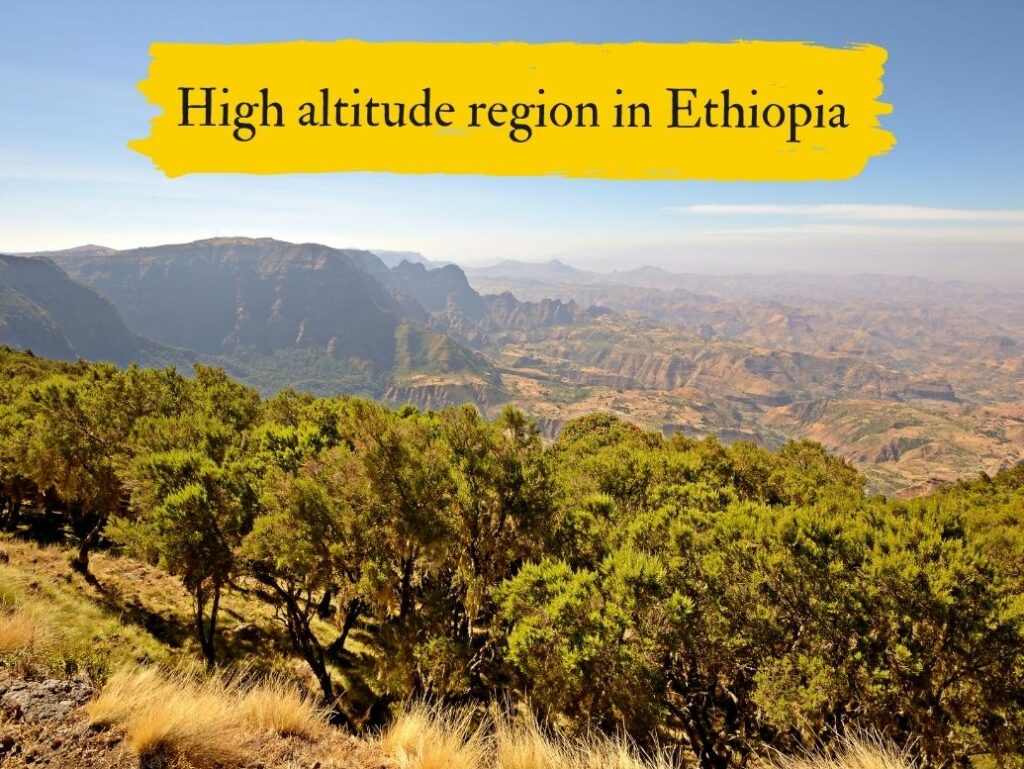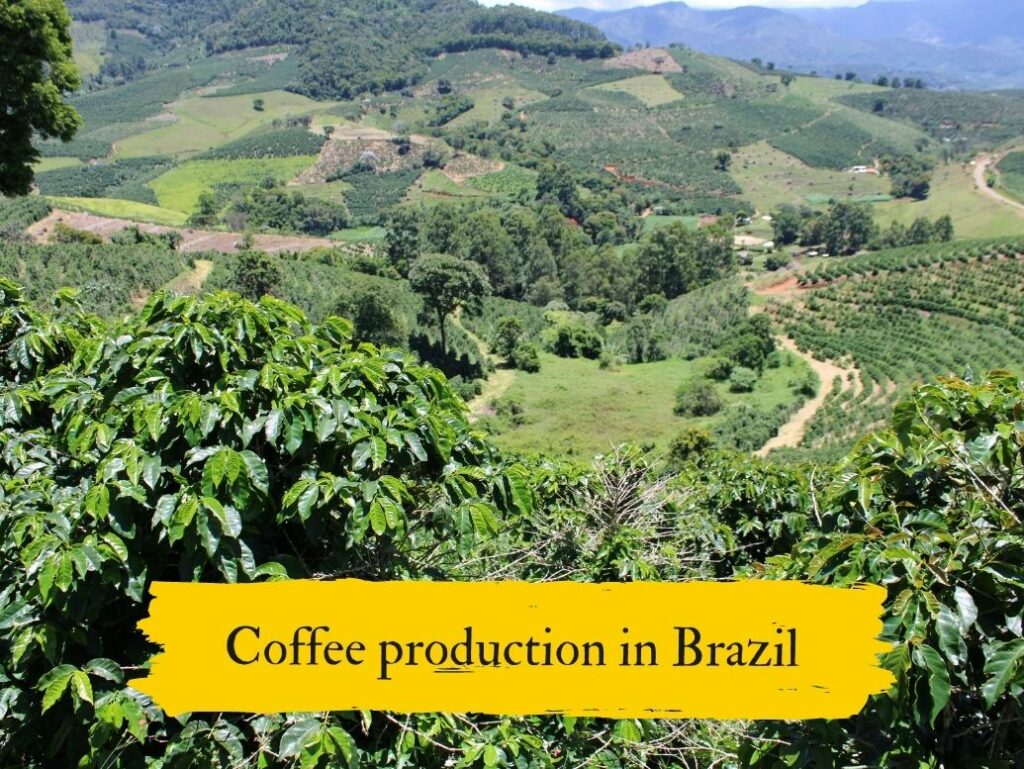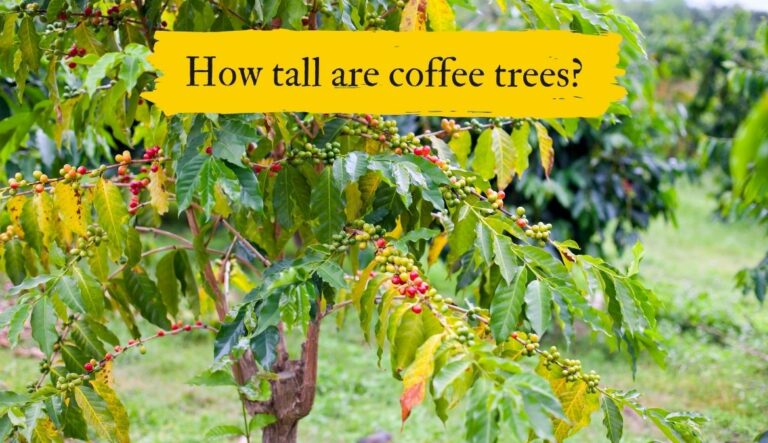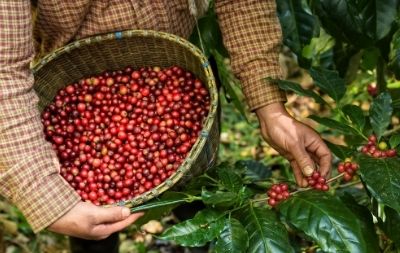Coffee is grown in more than 80 countries across the world and in a variety of different environments. Each environment has different soil, temperature, rainfall and altitude, among other factors as well.
In this article we will dive into the importance of altitude and how it affects a coffee’s taste, growth and more.

What elevation does coffee grow at?
Coffee is grown at a variety of altitudes ranging between 150-1,828m (492-6,000 feet). Robusta coffee is usually grown below 800m (2,624 feet) while arabica coffee is usually grown above 1,300m (4,265 feet).
What altitude does arabica coffee grow at?
Arabica coffee is usually grown at an elevation of between 1,300-1,500m (4,265-4,921 feet). Some countries even grow them above 1,524m (5,000 feet), which results in very floral and fruity flavors. Other countries are unable to grow at high altitudes because the temperatures are too cold.
For example, Hawaiian Kona is grown between 182-762m (600-2,500 feet). Hawaii is located too far from the equator so higher elevations are unsustainable for producing coffee because it gets too cold.

What altitude does robusta coffee grow at?
Robusta coffee is usually grown between 200-800m (656-2,624 feet).
What altitude are strictly hard coffee beans grown at?
Strictly hard beans (SHB) are grown at altitudes above 1,371m (4,500 feet). The high altitude causes the coffee fruit to grow more slowly, which results in the coffee beans having a higher density and more consistent flavor profile.
High altitude coffee is sought after for its unique taste. This increased demand, combined with the limited supply that can be grown globally, makes SHB more expensive than most coffee.
Is coffee grown at higher altitudes better?
A study has found that coffee tends to have a better taste profile, quality attributes and consistency when grown at altitudes above 1,802 meters above sea level (MASL)[2]. This is due to the coffee containing lower levels of fatty acids and sucrose and growing with higher density and consistency.
This is based on the Ethiopian Commodity Exchange (ECX) procedure for grading coffee, which includes a physical grading of the bean as well as a cupping taste test.

How do you measure something subjective like coffee quality?
The fact that consumers have different taste preferences from one another is a valid point when talking about coffee quality. One coffee may taste great to one person and terrible to another.
That being said, there are some useful things we can learn from studies that explore coffee quality:
The study above, which was conducted in partnership between Jimma University and Haramaya University, confirms empirical differences between coffee grown at low, medium and high altitudes. There is no question that altitude affects the chemical composition of coffee beans.
Therefore, your opinion of a “high quality” coffee is likely based on some sort of measurable characteristic of the coffee you’re drinking.
Second, the more subjective taste testing component of the ECX procedure is applied consistently across all coffee evaluations and has a goal of identifying coffee that meet international coffee demands.
In other words, a “high quality” coffee by ECX standards should correlate with how much consumers will enjoy it, based on what the market is actually paying money for.
It’s certainly not a perfect quality indicator but is based on fairly sound incentives.
Higher altitude coffee has better acidity, balance and quality
A study of Peruvian coffee confirmed that acidity, balance and overall quality increased when a coffee was grown at higher altitudes[1]. Whereas the aroma and flavor of low and high altitude coffee remained about the same.
Other anecdotal evidence from coffee drinkers suggests that higher altitude coffee tastes better.
Higher altitude coffee contains fewer fatty acids
A study from BMC Chemistry discovered that the contents of major fatty acids (palmitic, stearic, linoleic and oleic acids) in Ethiopian coffee beans decreased as the growing altitude increased[3].
In other words, the higher the altitude, the fewer fatty acids a coffee contains.
Many coffee enthusiasts agree that higher altitude coffees taste better. So you could imply that there is a correlation between the fatty acid content, growing altitude and quality of the coffee.
Of course, coffee taste is subjective so it’s certainly not true for every coffee drinker that a high altitude coffee will be better.
But what is clear is that altitude affects the chemical composition, and therefore the taste, of coffee. So it’s a factor that is worth considering when you choose to buy your next batch of beans.
Why does coffee grow at a high altitude?
Coffee will grow at many altitudes as long as it gets a consistent amount of rainfall and has warm enough temperatures. As a result, high altitude environments near the equator tend to provide coffee plants with everything they need to grow successfully.
What is the best altitude for coffee to grow?
Many coffee enthusiasts believe the best coffee is grown at elevations above 1,371m (4,500 feet) because it contains more fruity and floral flavors. Other consumers do not enjoy these flavors and prefer coffee grown between 1,300-1,500m (4,265-4,921 feet) that has more balanced flavors.

It’s fair to say that most coffee drinkers prefer arabica beans to robusta beans because they are more flavorful in general and contain less natural bitterness. Arabica beans grow best above 1,300m (4,265 feet), whereas robusta beans are usually grown between 200-800m (656-2,624 feet).
How do you know what altitude your coffee was grown at?
Most store-bought coffee beans will not display the altitude the coffee was grown at because it’s not something that the average coffee consumer cares about. Also, because many store-bought brands blend coffee that’s grown in different regions.
A coffee’s altitude, growing region and other origin characteristics are more likely to be advertised by specialty coffee roasters. Roastery businesses tend to place greater emphasis on these factors as an indication of their product’ quality.
It’s in the best interest of a specialty coffee roaster to demonstrate to customers that they are producing a high quality product. Roastery businesses also tend to attract a workforce that is genuinely passionate about the coffee producing and roasting business.
Why isn’t all coffee grown at a high elevation?
Coffee isn’t always grown at high elevations because the temperature and rainfall may not allow successful coffee production to happen. Temperature drops as elevation increases, which can cause growing problems in countries that are not located close enough to the equator.
Also, not all coffee grows best in high altitudes. Most of the high altitude coffee is coffea arabica, or arabica beans. This variety of coffee accounts for more than 60% of the global coffee trade and requires higher altitudes to grow well.
But there are other coffee varieties, such as robusta, that grow better in lower altitudes with higher temperatures.
How much does high altitude coffee cost?
Arabica coffee, which is grown at higher altitudes than most coffee varieties, costs about twice as much as robusta coffee. This is because there are higher demands for it and because it’s more difficult to produce.
Big brand coffee manufacturers, such as Maxwell House and Folgers, blend robusta beans with arabica beans to lower the cost. This allows them to meet the market demand for consumers who desire a high volume and low cost product.
References
- Gamonal, L. E., Vallejos-Torres, G., & López, L. A. (2017). Sensory analysis of four cultivars of coffee (Coffea arabica L.), grown at different altitudes in the San Martin region-Peru. Ciência Rural, 47.
- Mintesnot, A., & Dechassa, N. (2018). Effect of altitude, shade, and processing methods on the quality and biochemical composition of green coffee beans in Ethiopia. East African Journal of Sciences, 12(2), 87-100.
- Tsegay, G., Redi-Abshiro, M., Chandravanshi, B. S., Ele, E., Mohammed, A. M., & Mamo, H. (2020). Effect of altitude of coffee plants on the composition of fatty acids of green coffee beans. BMC chemistry, 14(1), 1-11.






